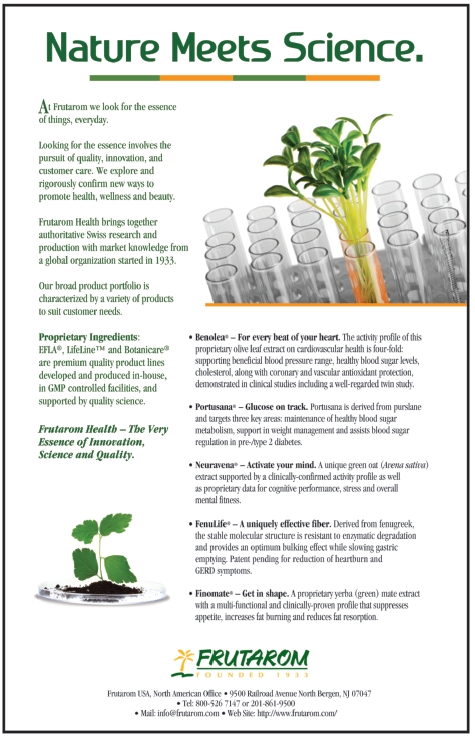What products should you carry? The answer to this question 20 years ago was fairly simple, since natural products weren’t widely available; you just carried them all. But today, with retail competitors in eight separate distribution channels offering some or all of the same products you carry, the answer becomes more complex.
If you’ve recently taken a stroll down the aisles and along the perimeter walls of your local conventional supermarkets, you realize that not only do these stores carry some of the products you do, but in their freezers, dairy departments, egg, meat, poultry and produce cases, they often have much more than the typical independent natural products retailer has space to offer.
As natural products have entered mainstream consciousness, the desire for health and wellness is a new force driving most households to regularly purchase at least some of these “better-for-you” items. Because of this blossoming awareness, it is past time for independent natural products retailers to reassess strategy on product mix to remain relevant to shoppers who now can and do shop virtually everywhere.
No Primary Store
Before you start feeling particularly persecuted by new competitors or fickle shoppers, you may take some comfort in knowing that your local conventional supermarket is also under pressure. In the latest Food Marketing Institute U.S. Grocery Shopper Trends 2014 study, after bumping around the 2% to 3% level over the last several years, the number of people claiming to have no primary food store has tripled to 9% from 3% in 2013.
This huge and rapid shift dovetails with the new reality that there  is no longer a single, adult person in the household who is responsible for all food shopping. Men are taking over a larger role from the women who traditionally did the bulk of food shopping. And Millennials, those young adults under age 34, are mixing it up even more, shopping at the last minute for meal ingredients they intend to cook that night, and not bothering with shopping lists, advertised specials or even with what foods may already be in their pantries at home.
is no longer a single, adult person in the household who is responsible for all food shopping. Men are taking over a larger role from the women who traditionally did the bulk of food shopping. And Millennials, those young adults under age 34, are mixing it up even more, shopping at the last minute for meal ingredients they intend to cook that night, and not bothering with shopping lists, advertised specials or even with what foods may already be in their pantries at home.
Time for New Thinking
While these new shopping realities may be causing you lost traffic and financial pain at the moment, they reflect a clear victory for the natural foods movement. Isn’t what we wanted a healthier world?
Please take a step back from your particular challenges and ask this question: Am I ready to serve the potentially thousands of new consumers in my community who are now interested in natural products, but who don’t yet fully understand how to use them? At the moment, the answer for the typical natural products retailer is, “No, my store is not ready.” Exhibit No. 1 as proof of this is a half-filled produce case with a dozen or so not-quite-fresh organic vegetables. While you may have been able to come to market 10 years ago with anything that was organic and fresh because no one else carried organics at all, today the market has left you behind.
As you look around the world of business, you realize that companies are pulling themselves apart and putting themselves back together in different forms all the time. Businesses routinely slice off pieces of the operation that aren’t working, or are underfunded, so they can focus on their strengths and concentrate their limited resources. Natural products retailers are no different.
Frequency
So, what can you do?
With the explosion of demand for all things natural, unless you are willing and able to operate and can afford a big store—the current competitive sweet spot in medium to higher population density areas is from 15,000 square feet to 28,000 square feet—now is the time to consider moving away from those departments and categories that aren’t driving traffic to you.
 If you are like most independents, supplements still form the core of your business, especially in contributing to your profits. So, it is a given that you will want to retain your biggest money maker. Also, with supplements, you have the clear advantage over most of your competitors because you possess the knowledge to explain exactly how and why consumers should consider taking these products, and how they fit into a healthy lifestyle.
If you are like most independents, supplements still form the core of your business, especially in contributing to your profits. So, it is a given that you will want to retain your biggest money maker. Also, with supplements, you have the clear advantage over most of your competitors because you possess the knowledge to explain exactly how and why consumers should consider taking these products, and how they fit into a healthy lifestyle.
You also still have a slight product advantage in health and beauty aids, or natural personal body care products, offering more variety and quality than most of your competitors. But, at less than 10% of sales for most independents, this category won’t be the difference between continuing to struggle and having a profitable future.
So, we come to foods. I’m curious to know if your gluten-free sales are still growing at the rapid pace of the last few years, as conventional supermarkets have jumped on the gluten-free bandwagon. New naturals shoppers looking for gluten-free are probably finding all they need in the same conventional supermarkets where they have begun to buy their organic produce, milk, free-range chickens, Greek yogurt and omega-3 eggs.
But, if you cut out all your foods, you run the danger of decreasing the frequency with which customers shop your store. Dry packaged grocery items have a buy cycle of one to two weeks, while fresh foods are a several-times-a-week shop. Vitamins and health and beauty aids are monthly.
Zeroing In
While you may no longer be able to move meaningful amounts of highly-perishable items such as yogurt, milk, eggs and produce, you can still offer certain “immediate consumption” foods: ready-to-drink healthy beverages such as water, fortified drinks, juices, green, black and white teas, smoothies, and energy drinks. Although you might not think so, seemingly “niche” items like kombucha can appeal to a broad spectrum of people, from construction workers looking for a midday energy pick-me-up to the office worker wanting to make a healthier choice for the afternoon stretch. How about a growler filling station for fresh kombucha? Perhaps you have a local supplier willing to work with you.
For those of you with prepared foods, lunch also continues to be an opportunity. With a minimal prepared foods area and limited labor costs, you can offer healthy, pre-made sandwiches and wraps, cups of soup, salads, hot coffees and teas for daytime populations looking for healthy alternatives. These beverages and foods are all daily traffic drivers.
Still the Expert
Even though you can’t easily carry the full array of natural products available today, you can still present yourself as—and in fact you are—the expert authority on the healthiest choices. Think about it: all these new shoppers just learning about natural food options need guidance. They are not the Birkenstock-wearing hippies of a generation or two ago who were willing to drop out of mainstream society and completely reinvent their food universe. Today’s shoppers want their favorite comfort foods while adding new tastes and new experiences. The requirement today is that these new choices be healthy.
If you let the world know you have the answers to the questions, “What tastes good, is good for me, is created by an honorable company, and is good for the Earth?” the new naturals shopper will find you! WF
Jay Jacobowitz is president and founder of Retail Insights®, a  professional consulting service for natural products retailers established in 1998, and creator of Natural Insights for Well Being®, a comprehensive marketing service designed especially for independent natural products retailers. With 37 years of wholesale and retail industry experience, Jay has assisted in developing over 1,000 successful natural products retail stores in the U.S. and abroad. Jay is a popular author, educator, and speaker, and is the merchandising editor of WholeFoods Magazine, for which he writes Merchandising Insights and Tip of the Month. Jay also serves the Natural Products Association in several capacities. He can be reached at (800)328-0855 or via e-mail at jay@retailinsights.com. Listen to Jay speak at NPA SOHO Expo on Thursday, December 4, at 7:30 p.m. Jay will be speaking about “2014 37th Annual Retailer Survey by WholeFoods Magazine,” covering key findings and analysis from the survey. He will be exhibiting at Booth #406.
professional consulting service for natural products retailers established in 1998, and creator of Natural Insights for Well Being®, a comprehensive marketing service designed especially for independent natural products retailers. With 37 years of wholesale and retail industry experience, Jay has assisted in developing over 1,000 successful natural products retail stores in the U.S. and abroad. Jay is a popular author, educator, and speaker, and is the merchandising editor of WholeFoods Magazine, for which he writes Merchandising Insights and Tip of the Month. Jay also serves the Natural Products Association in several capacities. He can be reached at (800)328-0855 or via e-mail at jay@retailinsights.com. Listen to Jay speak at NPA SOHO Expo on Thursday, December 4, at 7:30 p.m. Jay will be speaking about “2014 37th Annual Retailer Survey by WholeFoods Magazine,” covering key findings and analysis from the survey. He will be exhibiting at Booth #406.
Published in WholeFoods Magazine, November 2014










